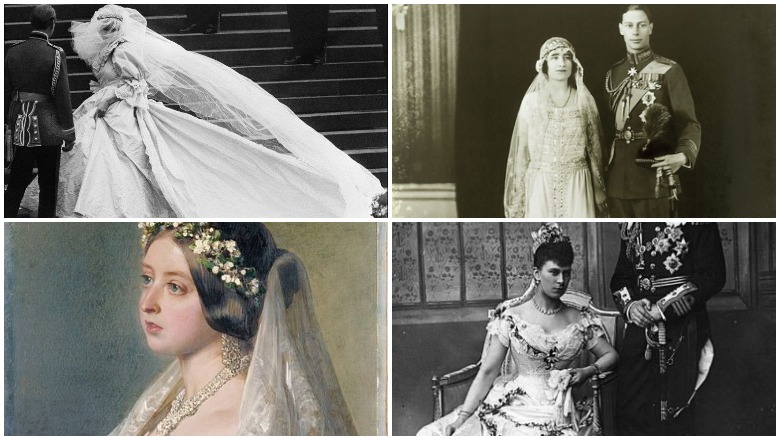
Getty/Wikimedia Commons Royal Family wedding dresses.
Royal wedding traditions date back centuries. Royal weddings are an intricate affair, and the nuptials of Prince Harry and American actress Meghan Markle will be no different.
From carefully chosen flowers to rare nuggets of gold, many aspects of British royal weddings are symbolic and entrenched in history. This royal wedding will take place on May 19, 2018 at St. George’s Chapel at Windsor, which is the burial and wedding spot of Kings and Queens.
Here’s what you need to know:
1. A Welsh Gold Nugget
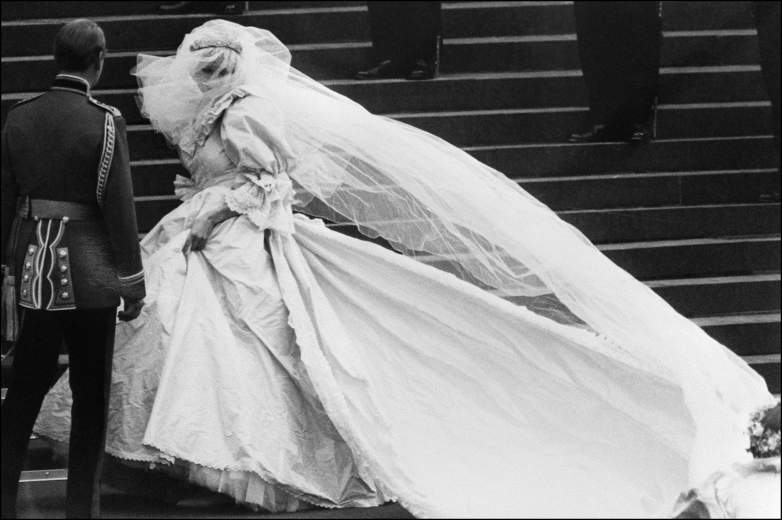
Lady Diana, Princess of Wales and Charles, Prince of Wales are seen during their wedding at St Paul Cathedral in London 29 July 1981. (Photo credit should read /AFP/Getty Images)
It’s not yet clear what Meghan Markle’s ring will be like because that information is released by the Royal Family on the wedding day. However, the Royal Family has a long tradition of using gold from a single Welsh nugget in its rings.
According to the Royal Family, “The wedding rings of Queen Elizabeth The Queen Mother, The Queen, Princess Margaret, Princess Anne, and Diana, Princess of Wales were all made from the same nugget of Welsh gold, which came from a Welsh mine, Clogau St David’s at Bontddu.”
The gold nugget is running out, though, and there is only a sliver of it left, the family reports on its website. However, the Royal Family was gifted with more gold. “There is still a minute sliver (one gramme) of this original piece of gold left, which is in the custody of the Privy Purse Office,” the Royal Family explains. “In November 1981, however the Royal British Legion presented The Queen with a 36-gramme piece of 21 carat Welsh gold, which is held by the Crown Jewellers to be used for the Royal Wedding rings of today.”
2. A Sprig of Myrtle
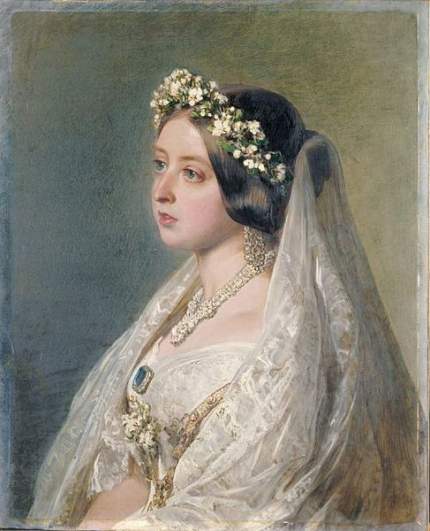
Wikimedia CommonsQueen Victoria’s wedding dress
The royal bouquet is often filled with symbolism too. It, as with many other British royal traditions, dates to the reign of Queen Victoria, who first received a sprig of it in a posey.
“Many Royal Brides across the generations, from Her Majesty The Queen to The Duchess of Cambridge, have chosen to carry a sprig of Myrtle in their bouquets. This tradition dates back to the wedding of Queen Victoria and Albert’s eldest daughter, also Victoria,” the Royal Family says.
“Myrtle, which represents love, fertility and innocence, has been grown at Osborne House, Queen Victoria’s holiday home on the Isle of Wight, for about 170 years. It was first given to Queen Victoria in a posey by Prince Albert’s grandmother in 1845. The descendants of this plant are still in the grounds of the house today.”
3. Tomb of the Unknown Warrior
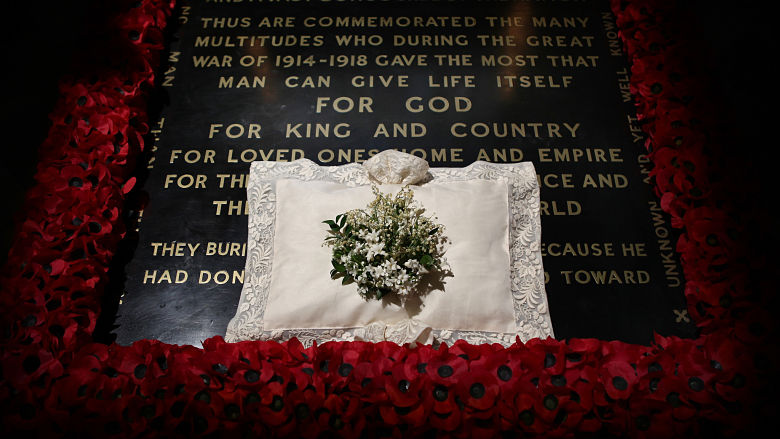
GettyTomb of the Unknown Warrior
Royal brides pause at the Tomb of the Unknown Warrior and place a bouquet there. What is it and why does this tradition exist? It was started by Elizabeth Bowes-Lyon, the Queen Mother, and has its roots in the horrors of World War I.
The Queen Mother was first to lay flowers there and she did so, says the Royal Family, “in remembrance of her own brother, Fergus, who died at the Battle of Loos in 1915 and to pay tribute to the millions of others killed and injured in World War I.”
Since she had placed the flowers at the tomb, Elizabeth walked down the aisle for her wedding without a bouquet. However, many royal brides since that time have both placed flowers at the tomb and carried a bouquet down the aisle.
4. Orange Blossom
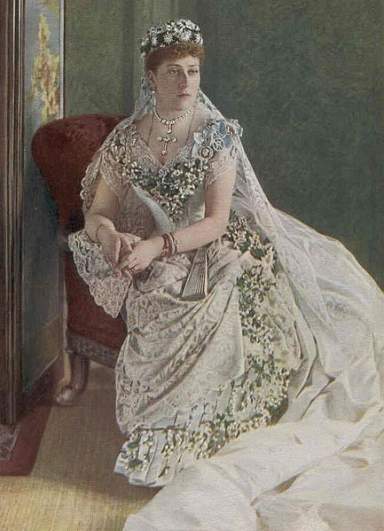
Wikimedia CommonsPrincess Beatrice
What does an orange blossom have to do with the Royal Wedding? A lot, it turns out. “For her wedding to Prince Albert on 10 April 1840, Queen Victoria did not wear a tiara, instead wearing a wreath of orange blossom, an emblem of chastity,” the Royal Family explains.
“Between 1839 and 1846, Prince Albert presented Queen Victoria with a number of pieces from a beautiful orange blossom parure (matching set of jewellery) to mark significant moments in their lives. In 1845, Albert gave Victoria orange blossom brooch and matching earrings, and the following year his gift of an orange blossom wreath celebrated their wedding anniversary.”
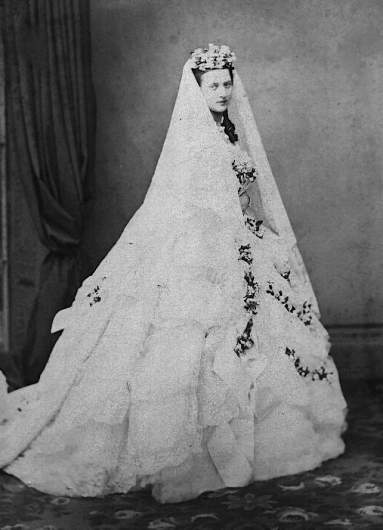
Wikimedia CommonsPrincess Alexandra
Many royal brides since have incorporated the bloom into their wedding dresses. The current queen had the design of an orange blossom sewn into the hem of her wedding dress.
5. St. George’s Chapel
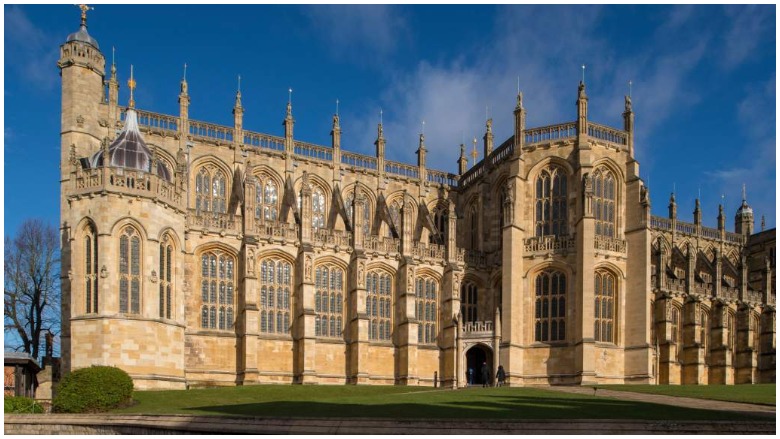
GettySt. George’s Chapel
Although it’s not always the choice for royal weddings, St. George’s Chapel, where Prince Harry and Meghan Markle will be married, has often served as such a locale, including for the Queen’s son, Prince Edward. Prince William married Kate Middleton at Westminster Abbey, however, a larger venue.
The chapel at Windsor was completed by King Henry VIII and has served as the burial places for Kings and Queens, including the parents of Queen Elizabeth II and Elizabeth’s sister, Margaret.